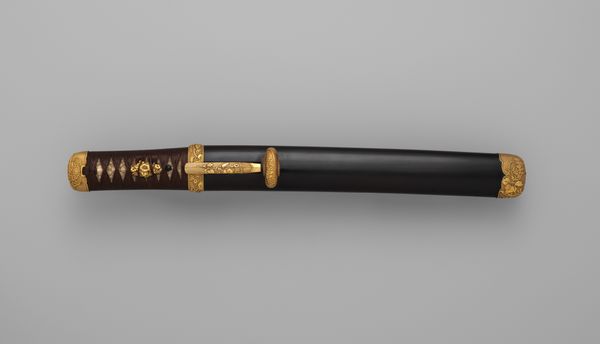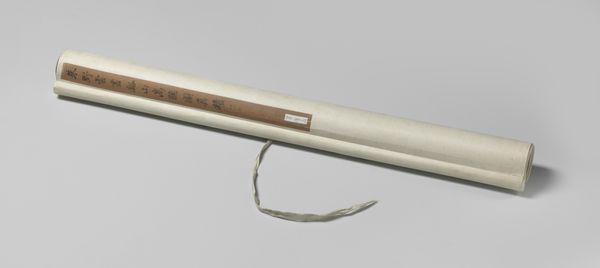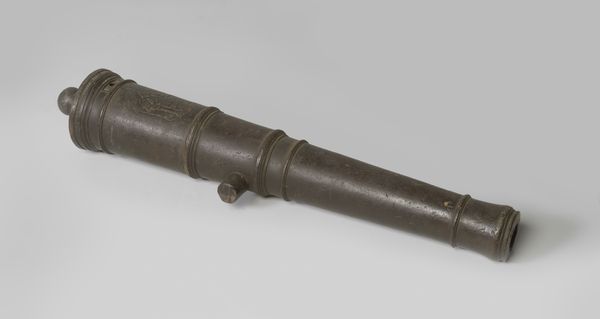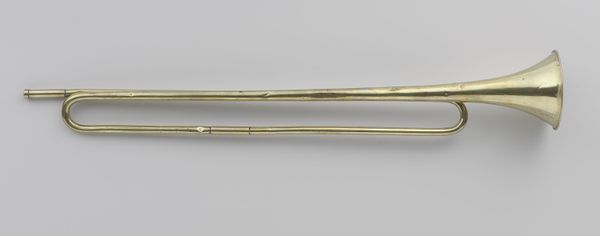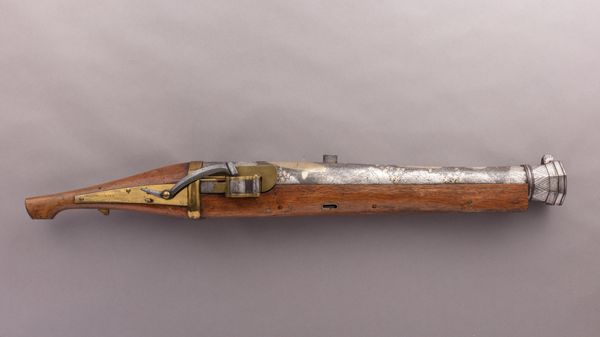
wood
#
neoclacissism
#
wood
Dimensions: length 520 mm, diameter 40 mm
Copyright: Rijks Museum: Open Domain
Johann Heinrich Gottlieb Streitwolf crafted this 'Third Flute,' around the late 18th or early 19th century, a period where music and craftsmanship converged. The instrument presents a study in line and form, defined by its cylindrical shape, punctuated by the geometric precision of its keys and rings. The flute’s composition invites us to consider the relationship between function and aesthetic. The parallel lines create rhythm, while the contrast between the light body and dark accents offers visual clarity. These elements combine to form a cohesive whole. The material qualities of the wood and metal suggest a concern with both auditory and tactile experience. This flute's visual structure can be seen as a reflection of the structured musical forms of its time, mirroring the clarity and balance sought in classical compositions. It is an example of how cultural values get embedded in functional objects.
Comments
No comments
Be the first to comment and join the conversation on the ultimate creative platform.
